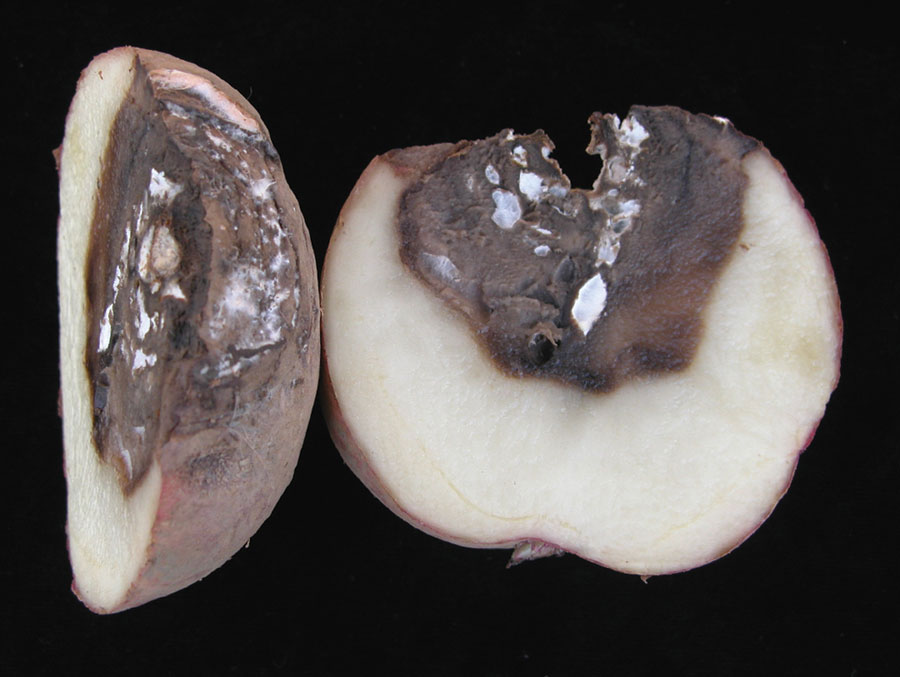This article aims to provide insights into the destructive plant disease known as dry rot, caused by Fusarium spp., which affects potato crops globally. We will delve into the latest data on the disease, including its development, and the consequences it can have on potato crops. Moreover, we will provide strategies for farmers, agronomists, and agricultural engineers to prevent the spread of dry rot in their potato crops.
Dry rot caused by Fusarium spp. is a plant disease that can cause extensive damage to potato crops worldwide. According to recent data from the University of Idaho, Fusarium dry rot can reduce the yield of potato crops by up to 30%, leading to significant financial losses for farmers. The disease is prevalent in areas with high humidity and warm temperatures, making it a significant concern for potato farmers worldwide.
The development of dry rot is influenced by factors such as temperature, humidity, and soil type. The fungus can enter the potato crop through wounds, bruises, or cuts, leading to extensive rotting and damage. Recent research has shown that good crop management practices, such as proper storage, avoiding injury during harvesting, and using disease-resistant potato varieties, can help prevent the spread of dry rot in potato crops.
In conclusion, preventing the spread of dry rot in potato crops requires a concerted effort from all stakeholders in the potato farming industry. Farmers, agronomists, and agricultural engineers must work together to implement effective management strategies to prevent the spread of dry rot and minimize its impact on potato yields and quality.
This article aims to provide insights into the destructive plant disease known as dry rot, caused by Fusarium spp., which affects potato crops globally. We will delve into the latest data on the disease, including its development, and the consequences it can have on potato crops. Moreover, we will provide strategies for farmers, agronomists, and agricultural engineers to prevent the spread of dry rot in their potato crops.
Dry rot caused by Fusarium spp. is a plant disease that can cause extensive damage to potato crops worldwide. According to recent data from the University of Idaho, Fusarium dry rot can reduce the yield of potato crops by up to 30%, leading to significant financial losses for farmers. The disease is prevalent in areas with high humidity and warm temperatures, making it a significant concern for potato farmers worldwide.
The development of dry rot is influenced by factors such as temperature, humidity, and soil type. The fungus can enter the potato crop through wounds, bruises, or cuts, leading to extensive rotting and damage. Recent research has shown that good crop management practices, such as proper storage, avoiding injury during harvesting, and using disease-resistant potato varieties, can help prevent the spread of dry rot in potato crops.
In conclusion, preventing the spread of dry rot in potato crops requires a concerted effort from all stakeholders in the potato farming industry. Farmers, agronomists, and agricultural engineers must work together to implement effective management strategies to prevent the spread of dry rot and minimize its impact on potato yields and quality.
#DryRot #FusariumSpp #PotatoCrops #CropManagement #DiseasePrevention #PotatoVarieties #AgricultureResearch #Farmers #Agronomists #AgriculturalEngineers
